Ceramic cookware has gained popularity for its excellent non-stick properties, even heat distribution, and eco-friendly design. Unlike traditional non-stick pans, ceramic pans often utilize a natural coating free from harmful chemicals, making them a healthier option for cooking.
However, to maximize their benefits, it’s crucial to maintain them well. Proper cleaning techniques are essential for preserving the non-stick coating and extending the pan’s lifespan. This article aims to serve as a detailed guide on how to clean ceramic pans effectively. By following these tips, you can maintain their pristine condition and optimal performance, ensuring they remain a staple in your kitchen for years to come.
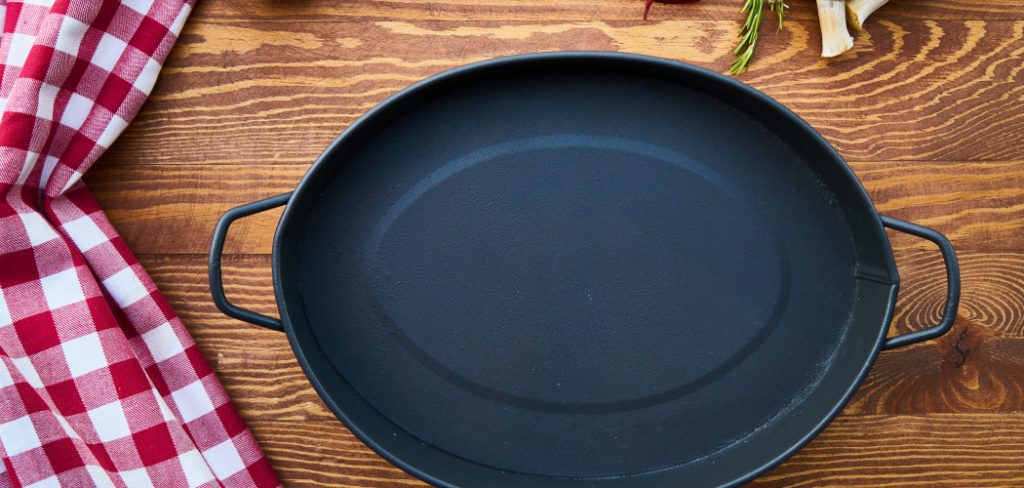
Understanding Ceramic Pans and Common Issues
What Makes Ceramic Pans Unique?
Ceramic pans stand out in the world of cookware due to their natural non-stick surface, crafted from inorganic materials that are free of PTFE and PFOA chemicals commonly found in traditional non-stick coatings. This makes them a healthier choice for cooking, minimizing the risk of harmful chemical exposure. Furthermore, ceramics are renowned for their ability to distribute heat evenly, making them ideal for cooking at moderate temperatures. This equal distribution ensures that food is cooked uniformly, avoiding hot spots that can lead to uneven results and burnt food.
Common Cleaning Challenges
Despite their benefits, ceramic pans can present certain cleaning challenges if not used correctly. Burnt-on Food can occasionally occur when the pan is overheated or misused, as excessive temperatures can cause food to stick to the surface. Proper temperature control is essential to prevent this issue. Oil Residue is another concern, as over time, oil can build up and impact the efficiency of the non-stick surface. Regular cleaning to remove this residue is key. Stains from cooking acidic or colorful foods can sometimes dull the pan’s surface. These stains can be tackled with thorough cleaning and occasional deep cleaning techniques, as detailed in this guide.
Tools and Materials Needed for Cleaning Ceramic Pans
To ensure the longevity and effectiveness of your ceramic pans, gather the right tools and materials for cleaning.
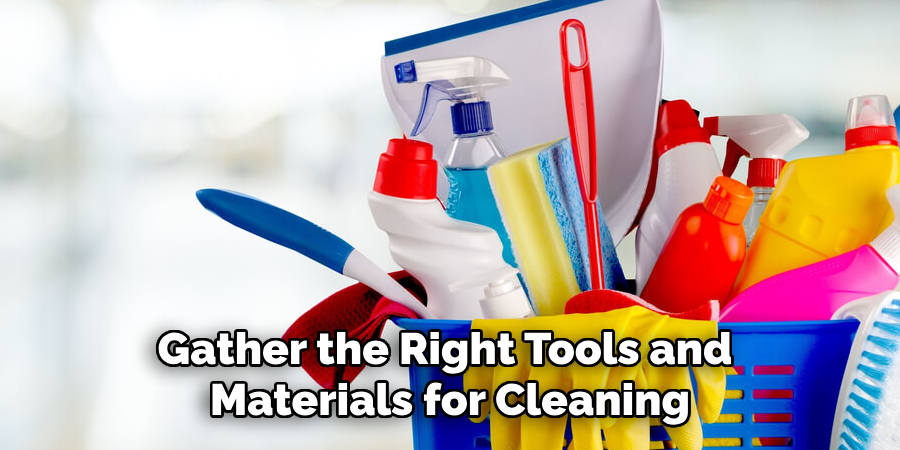
Basic Cleaning Tools
- Soft Sponge or Microfiber Cloth: Essential for gentle cleaning without scratching the surface.
- Non-abrasive Scrub Brush: Useful for tackling residue without damaging the pan.
- Baking Soda: A natural cleanser that effectively removes food particles and stains.
- White Vinegar: Acts as a natural degreaser suitable for breaking down oil and food residue.
- Dish Soap: Mild soap is ideal for regular cleaning to maintain the pan’s surface.
- Warm Water: For rinsing away soap and cleaning agents.
- Soft-bristle Toothbrush: Perfect for accessing tough spots or pan edges that need extra attention.
Optional Tools for More Stubborn Cleaning
- Wooden or Silicone Spatula: Helps gently scrape away burnt-on food bits.
- Commercial Ceramic Cleaner: Designed specifically for difficult stains or residues.
Using non-abrasive tools is critical in protecting the delicate ceramic coating from scratches, preserving its non-stick properties, and preventing long-term damage.
How to Clean Ceramic Pans: Step-by-Step Guide
Step 1: Let the Pan Cool
Allowing the ceramic pan to cool down completely before cleaning is crucial to avoid the risk of warping and to ensure effective cleaning. Rapid temperature changes can damage the pan’s structure, leading to cracks or other forms of wear over time. After finishing cooking, set the pan aside for a few minutes. This practice protects the pan and makes handling it easier and safer.
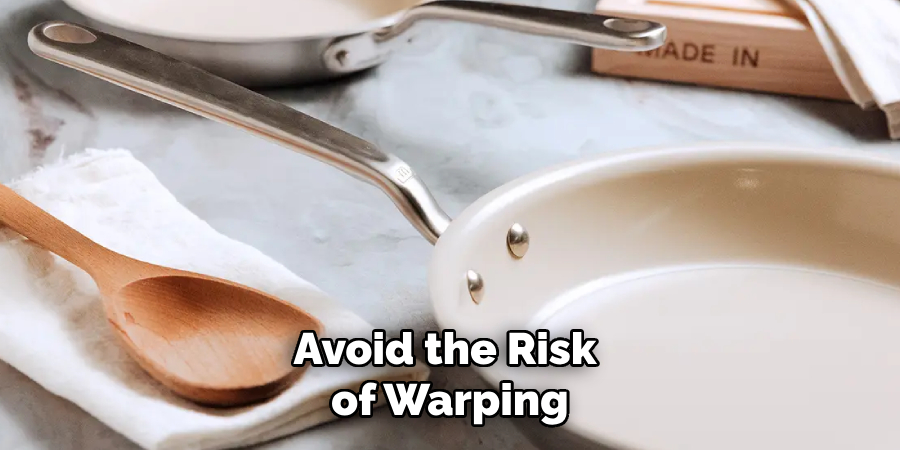
Step 2: Wash with Warm Soapy Water
Fill your sink with warm water and add a few drops of mild dish soap to create a soapy solution. Immerse the pan in the water, ensuring it is entirely submerged, which helps to loosen any food residue. Use a soft sponge or a microfiber cloth to gently wipe both the inside and outside surfaces of the pan. Pay close attention to the areas where oil and food particles are likely to accumulate. For edges or stubborn bits of food stuck near the handle, employ a soft-bristle brush to carefully clean these hard-to-reach spots. This step should be approached gently to maintain the integrity of the ceramic coating.
Step 3: Rinse and Dry Thoroughly
Thoroughly rinse the ceramic pan under warm running water. Make sure all soap residues are completely washed away, as leftover soap can lead to buildup and affect the pan’s non-stick properties. After rinsing, take a soft towel and gently pat the pan dry. Alternatively, place it on a drying rack to air dry, ensuring that it is entirely dry before storage. Proper drying is important to prevent water spots or stains from forming on the pan’s surface. Storing a dry pan will also avoid mold or mildew growth inside your kitchen cupboards. By following these steps diligently after every use, you ensure that your ceramic pan remains in excellent condition and ready for your next culinary endeavor.
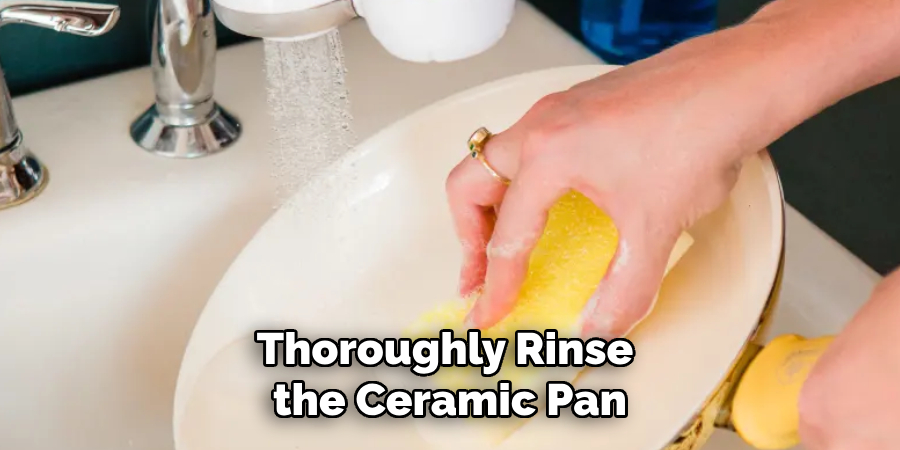
Deep Cleaning a Ceramic Pan with Burnt-on Food
Even with regular care, ceramic pans can sometimes accumulate tough, burnt-on food. Fortunately, deep cleaning techniques can restore them to their former glory, and this section will guide you through the process.
Step 1: Soak the Pan in Hot Water
Start by filling the pan with hot water, enough to cover the burnt areas. Let it soak for 15-30 minutes to help loosen any stuck-on food. Mix a few drops of dish soap into the water for added cleaning power. The soap will begin to break down grease and food residue, making cleaning easier and protecting the ceramic surface from harsh scrubbing.
Step 2: Use a Non-Abrasive Scrubber
After soaking, gently scrub the ceramic surface using a non-abrasive sponge or brush to remove the loosened food. Avoiding steel wool or abrasive pads is crucial, as these can scratch and damage the ceramic coating, compromising its non-stick properties. If any residue remains, repeat the soaking process before scrubbing again.
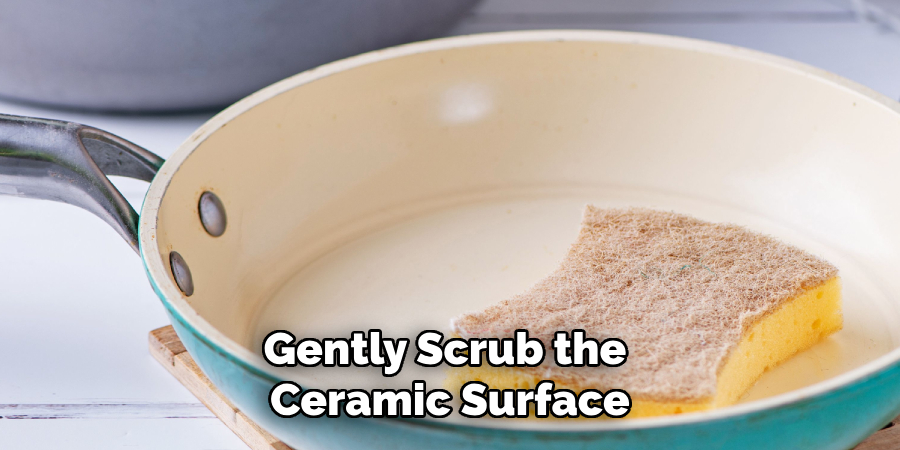
Step 3: Create a Baking Soda Paste for Stubborn Stains
For persistent burnt spots, create a paste by mixing baking soda with a small amount of water. Apply this paste generously to the burnt or stained areas and let it sit for 10-15 minutes to break down the stubborn residues. Use a soft sponge or a cloth to gently scrub the paste away, often revealing a clean and revitalized surface beneath.
Step 4: Try White Vinegar for Tough Residue
White vinegar can act as an effective natural degreaser if tough oil stains or burnt food residue persist. Apply a small amount of vinegar to the affected areas and scrub gently with a non-abrasive sponge to avoid causing any damage. The acidity of the vinegar will help dissolve stubborn residues. Remember to rinse the pan thoroughly afterward to ensure no vinegar remains, which could affect future cooking endeavors.
Step 5: Rinse and Dry
Once all cleaning steps are complete, rinse the pan with warm water to remove any remaining cleaning agents. This is vital to maintain the pan’s integrity and performance. Dry the pan thoroughly with a soft towel or let it air dry completely before storing it away. Proper drying helps avoid water spots and ensures longevity, keeping your ceramic pan ready for its next use. By following these deep cleaning steps, your pan will remain in excellent condition, showcasing its superior cooking capabilities each time it’s used.
How to Maintain and Care for Ceramic Pans
Avoid Overheating
Cooking on high heat can severely damage the non-stick properties of ceramic pans. Excessive heat may cause the ceramic coating to warp or break down, leading to food sticking and uneven cooking surfaces. To protect your pan, always cook using medium or low heat. This not only preserves the non-stick coating but also extends the lifespan of your cookware. Be patient and allow adequate time for your dishes to cook thoroughly at these safer temperatures.
Use the Right Utensils
The ceramic surface’s integrity is best preserved using utensils made from wood, silicone, or plastic. These materials are soft enough to avoid scratching the delicate coating. On the other hand, metal utensils can chip or wear down the non-stick layer, leading to premature wear. For best results, carefully select utensils that are designed to be gentle on non-stick surfaces, ensuring the long-lasting performance of your pans.
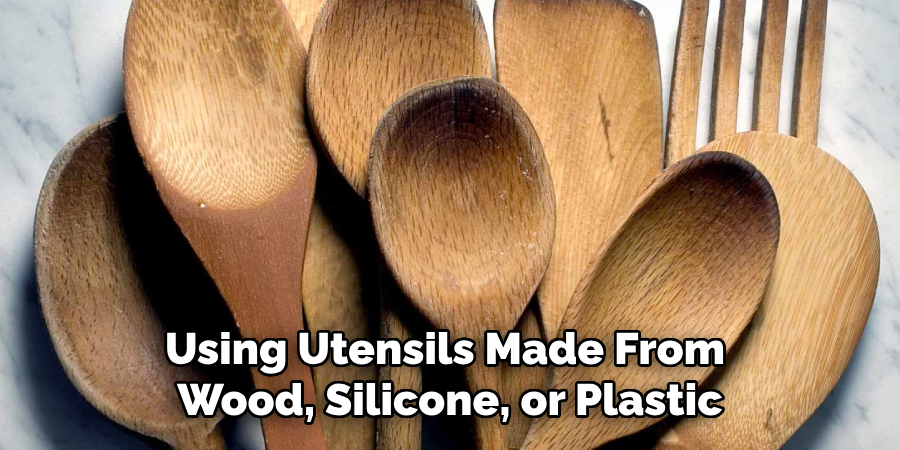
Proper Storage Tips
When storing your ceramic pans, it’s essential to prevent any potential scratching or damage to the coating. Place a soft cloth or liner between pans if stacking is necessary to create a protective barrier. Alternatively, hanging pans can effectively avoid contact with other kitchen items, thus preserving the surface. Proper storage is a simple yet crucial step in maintaining the quality of your ceramic cookware.
Periodic Deep Cleaning
To maintain non-stick properties, it is recommended that you deep clean your ceramic pans every few weeks. Use baking soda or a commercial cleaner to tackle any stubborn residue or stains. Regular maintenance through deep cleaning prevents buildup and can significantly prolong the pan’s utility and performance. These practices keep your pan looking pristine and ensure it functions at its best with each use.
Troubleshooting Common Ceramic Pan Issues
Issue 1: Stuck-on Food Even After Cleaning
Stubborn food particles can remain on your ceramic pan despite standard cleaning. To address this, create a gentle abrasive by mixing baking soda with water to form a paste. Apply the paste to the stuck-on areas and let it sit for a few minutes before gently scrubbing with a non-abrasive sponge. If needed, soak the pan in hot, soapy water longer and repeat the cleaning process to ensure all residues are removed.
Issue 2: Loss of Non-Stick Coating
Overheating or using abrasive tools can degrade the non-stick surface of ceramic pans. To repair this, consider using a non-stick pan repair spray, which can help restore some of the lost properties. If the damage persists, contact the manufacturer for warranty information or replacement options, particularly if the pan is still within the warranty period.
Issue 3: Discoloration or Staining
Discoloration from acidic foods or oil stains can be tackled with a vinegar soak. Fill the pan with a mixture of white vinegar and water, allowing it to sit for 15-30 minutes before rinsing. This helps lift stains and restore the pan’s appearance. After each use, ensure thorough cleaning and drying to prevent future discoloration and keep your ceramic pan in pristine condition.
Conclusion
Proper care and maintenance are essential when it comes to how to clean ceramic pans and keep them in top condition for years. Begin with gentle washing using non-abrasive tools to protect the surface, followed by periodic deep cleaning to address tough stains and residues. Consistent care, such as using the right utensils and storing them properly, ensures the non-stick properties remain intact. By following these cleaning tips regularly, you can enjoy a superior cooking experience with your ceramic pans, maintaining their pristine appearance and long-lasting performance.
Specialization:
- Master of wheel-throwing, hand-building, and advanced glazing techniques
- Focus on creating both functional pottery and decorative art pieces
Recognition:
- Celebrated by collectors and art enthusiasts for creating one-of-a-kind pieces that blend artistry with functionality
- Participates in local and national exhibitions, earning accolades for his innovative designs and craftsmanship
Passion:
- Deeply committed to exploring and pushing the boundaries of ceramic artistry
- Continuously experiments with new materials, firing techniques, and artistic concepts to evolve his craft
Personal Philosophy:
- Believes in the transformative power of art, aiming to evoke emotions and connections through his ceramic creations
- Advocates for sustainability in ceramics, using eco-friendly materials and practices whenever possible


